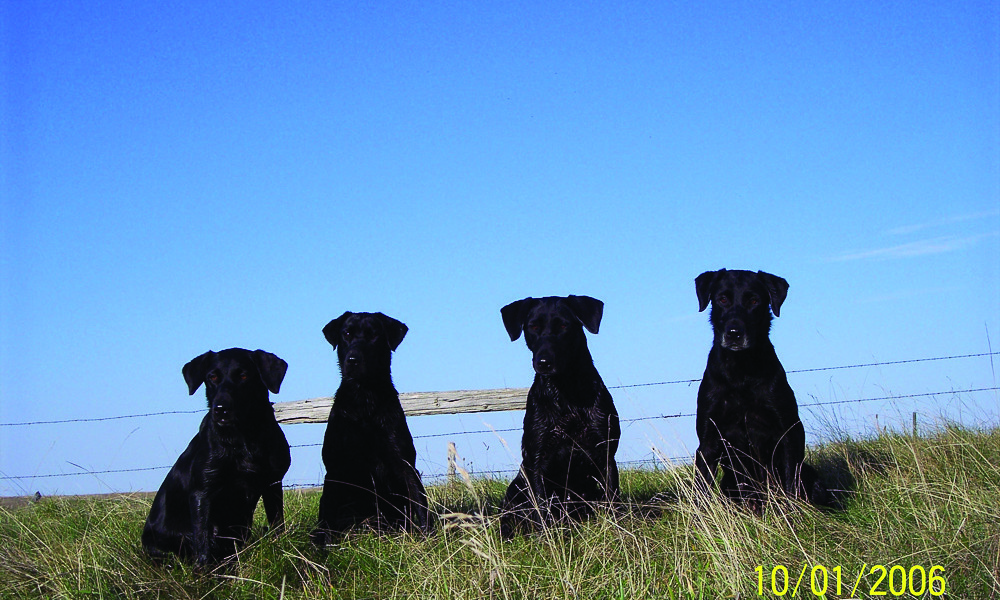Evaluating a good gun dog begins with a Pedigree that explains a dog’s ancestry.
What you see is what you get doesn’t necessarily hold true for dogs.
Just by looking at a dog, even the keenest veterinarians and trainers can have difficulty critiquing a dog’s physical characteristics or potential problems it may develop in the future.
That is why a pedigree is so important when choosing a new puppy that will be your future hunting companion.
Some people will say that you can’t hunt a pedigree, but in purchasing a pup, it’s a big gamble, and you’ve got to have some foundation to help you start your evaluation procedure.
If there is one thing you’ll learn, people describing dog abilities are like fish stories: there are times when you just can’t believe the breeders.
Look for these dog characteristics
A pedigree, a schematic listing of a dog’s ancestry, can give a prospective owner important information that can be used to evaluate a puppy.
The two areas of a pedigree most closely scrutinized are field trial distinctions and health clearance certifications.
I look for dogs that have competitive titles in their pedigree, i.e. NFC (National Field Championship) or NAFC (National mateur Field Champion). In recent years, noncompetitive titles have been introduced into pedigrees, i.e. MH (Master Hunter) and SH (Senior Hunter). While the noncompetitive titles are better than none, I personally would prefer a dog with competitive titles in its pedigree.
A gun dog owner should be concerned about show titles, i.e. CH (Champion) or OTCH (Obedience Trial Champion) avoiding this breeding altogether.
As for health clearances, a pedigree should contain OFA and CERF numbers. OFA stands for Orthopedic Foundation for Animals, a national organization based in Columbia, Mo., that has established criteria to tell if a dog’s hips are good or bad. CERF stand for Canine Eye Registration Foundation, out of Lafayette, Ind., which guarantees that breeding is free of eye problems such as cataracts and retinal atrophy.
When looking at a pedigree, prospective owners shouldn’t look past the first two generations. When you hear people mention that a dog has field champions in its pedigree, when they’re in the third or fourth generations it doesn’t mean anything. The main input is parents and grandparents.
Genetic input is cut in half with each succeeding generation. A pup gets 50 percent of its genes from each parent and 25 percent from each grandparent. Going back further, a pup gets only 12.5 percent of its genes from great-grandparents and 6.25 from it great-greatgrandparents— and so on.
While a pedigree can be very useful, people obviously have to be able to critique how the breeder explains it. If he can’t explain the pedigree, stay away from it.
Dealing with the breeder
People have to develop their own criteria for what they want in a dog, but they also must be careful to find out what a breeder’s standards are. A breeder should be able to explain trainability characteristics of the puppy’s parents and grandparents, as well as their personality characteristics (for example, whether they are mellow, hyper, aggressive, etc.). It’s an old stigma that AKC titled dogs are more hyper.
People who buy a puppy that has a field trial pedigree can look forward to a smarter dog, one that works more efficiently with less reprimand.
With a field trial pedigree, your odds in getting that great dog are naturally improved, and more importantly, it’s physical structure should be sound.
Personally, I demand that a dog must be a fast learner, have keen marking and quartering abilities, stamina in the field, but also be a buddy. They have to be able to figure out their own environment, whether it’s the kennel, a house, or the field, and always be under control in those situations. That’s when they’re fun to be with.
